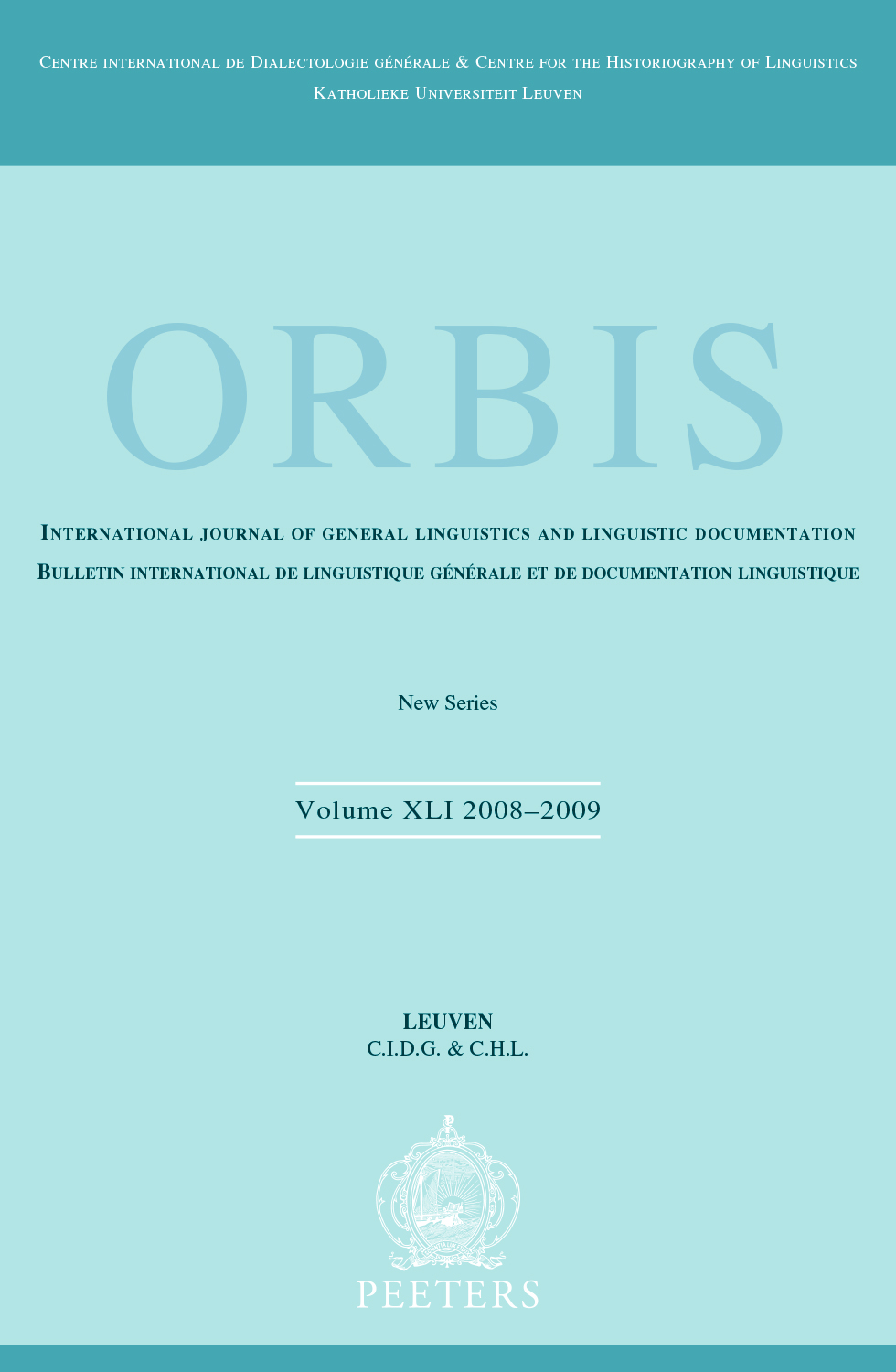 previous article in this issue previous article in this issue | next article in this issue  |

Preview first page |
Document Details : Title: The Inherent Laws of the Development of Modern Linguistics or What Happens when Nothing is Left to Discover Author(s): SZEMERÉNYI, Oswald Journal: Orbis Volume: 36 Date: 1991-1993 Pages: 203-220 DOI: 10.2143/ORB.36.0.2012807 Abstract : At a first glance, the student of the history of modern linguistics gets the impression that its development was entirely haphazard: various schools step into one another’s shoes, without any clear line being discoverable. That is of course assuming that there must or can be such a line at all. But the picture changes considerably if one looks at the development more closely. One sees, first of all, that the history splits into two almost equal parts: before and after 1916. Before 1916, i.e. after 1816, the advent of historical linguistics shows a gradual expansion from sounds through forms to syntax; then a noticeable drying-up. This is “solved” by the re-installation of the descriptive, and general variety. But here again we notice the sequence sounds-forms-syntax, and now text. These observations lead to the conclusion that the development was not haphazard but rectilinear, leading from one area to the next one, and then to the one after; what is more the first series is repeated in the econd period in exactly the same way. It is obvious that the development was not a haphazard zigzag but was all along determined by the structure of the language. |
|


